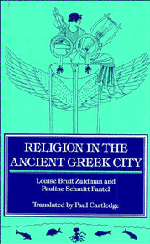Book contents
Translator's introduction
Published online by Cambridge University Press: 05 June 2012
Summary
Matter
O tempora! O mores! From my newspaper cuttings file marked ‘Religion’ I select almost at random three items appearing beneath the following headlines (in The Independent): (i) ‘Men of stone’ (26 February 1987), (ii) ‘Cathedral bans statue of nude after complaints’ (24 June 1990), and (iii) ‘Ealing retreats on Godless syllabus’ (4 April 1991).
(i) is a strange tale of ecclesiastical decay and would-be restoration obstructed by intra-sectarian feuding. The mediaeval church of St Bartholomew at Covenham, Lincolnshire, England, was derelict. A group of American Anglicans from Corona del Mar, California, USA, wished to transport the church of St Bartholomew from eastern England stone by stone and resurrect it on the West Coast. Their desire had the initial approval of the Church (of England) Commissioners but hit against the stumbling-block of the disapproval of the (US) Episcopalian Church, which successfully leaned on the Commissioners. The reason for the objection? The traditionalist American Anglicans, which included the relevant congregation of Corona del Mar, had recently decided to split from the parent Episcopalian Church because the latter was proposing to ordain women priests (as it has since done, not to mention women bishops).
The phenomenon of itinerant temples was not unknown in ancient Greece; for example, the temple of Ares originally built in the fifth century in the deme of Akharnai to the north of the city of Athens was disassembled and relocated in the Athenian Agora some four centuries later.
- Type
- Chapter
- Information
- Religion in the Ancient Greek City , pp. xi - xixPublisher: Cambridge University PressPrint publication year: 1992



